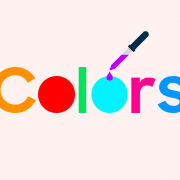Title Tags, Meta Tags, URL Structure, and HTML Text
Before you start phrase placement, you need to know how Google works. Search engines know what’s on your website using crawlers; Googlebot is Google’s most well-known crawler. These “spiders” automatically discover and scan websites by following links from one webpage to another, much like you would if you were browsing content on the web. They collect data (within the HTML text) about those webpages and send it back to the search engine server. Google creates its search results based on the information gathered by crawlers, so it is imperative to structure your site so crawlers can easily navigate and index.
Register your Sitemap with Google. This is a way to tell Google about pages on your site they might not otherwise discover. It is basically a list of pages within your website. You can also include metadata about content on your site including video and images. For example, a video Sitemap entry can specify the running time, category, and family-friendly status of a video; an image Sitemap entry can provide information about an image’s subject matter, type, and license. You can also use a Sitemap to provide additional information about your site, such as the date it was last updated, and how often you expect the page to change.
While search engines don’t guarantee they’ll crawl or index all of your URLs, most webmasters benefit from Sitemap submission and in no case are they penalized. If you’re a FarShore client, the development team will create a sitemap for you.
A common myth about SEO is that search engines use keyword density as a metric for rankings and relevancy. In reality, search engines have employed spam filters, so the key to SEO success isn’t repeating your keywords over and over again in your content, but rather placing your chosen phrases in specific places around your website.
1. Title tags:
A title tag should be an accurate and concise (<70 characters) description of the page’s content. Title tags are arguably the most important on-page sources of good SEO. The words closer to the beginning of the title carry more weight in terms of ranking. You should craft the title with user experience in mind: it is the first interaction a new visitor has with your brand.
1. Since we’re optimizing for “Chicago Dining” and “Restaurant Reservations” with OpenTable, the title tag of the homepage should be changed from “OpenTable | Home” to “Chicago Dining | Restaurant Reservations | OpenTable”
2. Meta tags are another source of information about each page.
1. The meta description is the text underneath each listing of search results. It is not indexed by search engines and thus, has no influence on rankings. However, it should be treated as short (<160 characters) advertising copy that entices users to click on the link and provides an accurate description of your business. Google bolds the important keywords in the description so their inclusion can help boost click-through rates.
a) The meta description should be an accurate description of what the user will experience when clicking the link. If done incorrectly, the description can do more harm than good. For example, if the meta description mentions a 10% off coupon, users should be able to find the 10% off coupon easily. If not, users are likely to leave the site right away, increasing bounce rates.
2) These descriptions should vary from page to page. For OpenTable, the meta description for their FAQ should be different from a particular restaurant’s page.
3. Carefully constructing your URL structures is also important. Good URLs give search engines more information when crawling your site. In search results, Google also bolds search terms in URLs. Like titles and meta descriptions, they should be as concise and descriptive as possible. If your page is targeting a specific keyword or phrase, include it in the url, but don’t go overboard. Overdoing it can lead to search engine spam filters blocking your site.
1. Use static URLs (ex. http://www.opentable.com/blog/staying-in/) instead of dynamic ones (ex. http://www.opentable.com/blog?id=12345).
2. Use hyphens instead of underscores, plus signs or spaces (“_” or“+” or “%20”). Some search engines don’t recognize those as spaces and won’t recognize the key phrase in the URL.
3. Avoid using unnecessary parameters (think session and source ID’s) in URLs. Parameters can be helpful in determining sources or user information, but will cause search engine confusion: content is the same, but URLs are different.
4. All too often overlooked, your body content is extremely important. Optimizing the above should improve your standing in engines, but a strong body is needed to drive your site up to the best ranking it can achieve.
1. The vast majority of the body content doesn’t need to be changed, but you should include the keywords you are optimizing for 2 to 3 times at a minimum. Stick to the same keywords you included in the title tag; it’s better to rank 1st for 2-5 important keywords than 15th for 30 mediocre keywords.
a. Primary vs. Secondary Keywords: You’ll need to distinguish between your primary list of keywords and a secondary list. Primary keywords need to have a large audience and relatively low level of competition, whereas secondary can have a lower level of traffic. Primary keywords should be the focus of URL, title, and body keywords, while secondary can be used in the body.
5. Search engines can’t index Flash files, Java applets or images, so the majority of your keyword content should be in HTML text form. You can use HTML “alt-attributes” to images and supplement Flash or Java with accompanying text to describe the content.
1. Assuming you aren’t coding your website, your development team should know how to tag images and videos. If you are editing code yourself, you just need to add relevant keywords inside the image or video tag. After the image source tag use keywords in the format ‘alt=”This is a picture of a last minute diner”’. Your entire image or media tag should end up looking like <img src=”image.gif” alt=”This is a picture of a last minute diner” />
We’ll finish out our SEO series with a guide next Tuesday (7/22) on mainteneance– SEO is a dynamic process, so you’ll need to keep some things updated going forward.











